59th Palladio Course
“Quella invecchiata usanza di fabbricare senza grazia e senza bellezza alcuna”: Palladio e l’architettura del passato prossimoVicenza, 26 - 31 August 2017Interventi di D. Battilotti, G. Beltramini, H. Burns, G. Guidarelli, A. Nante, D. Paternò, M. Piana, F. Rigon Forte, L. Trevisan, G. Zavatta
Scholars
Donata Battilotti, Università di Udine |
|
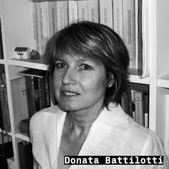 |
Donata Battilotti lectures on the history of architecture in the Arts Faculty at the University of Udine. Her study interests include Modern architecture, its patronage, construction sites, and relations with the history of the city and local area, mainly focused on Veneto, Friulian and Tuscan themes. She has dealt in depth with Palladio’s works and influence, the reconstruction of the urban image and countryside of 16th-century Vicenza through tax documents, Venetian villas, the construction of the Palazzo Comunale and squares of Piazza Contarena and Piazza I Maggio in Udine, 18th-century Friulian architecture, and commercial and manufacturing settlements in Leghorn and Florence during the Renaissance. She is a member of the cisaap Scientific Committee. |
Guido Beltramini, Direttore CISA A. Palladio |
|
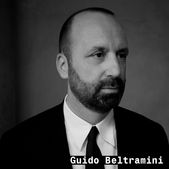 |
Director of the Centro Internazionale di Studi di Architettura Andrea Palladio since 1991. He was Visiting Professor at the University of Ferrara (1994 -2002). In 2008, he was Craig Hugh Smyth Visiting Fellow at Villa I Tatti, Firenze, The Harvard University Center for Italian Renaissance Studies, in 2009-2010 at Columbia University, New York, in 2011 at the Canadian Centre for Architecture, Montreal. He studies the history of Renaissance architecture, with a particular emphasis on Veneto, the art of war and the culture of the Antique in the Renaissance. He has curated exhibitions and catalogues at the Biennale, Venice, at the Royal Academy, London, at the Pierpoint Morgan Library, New York, at the National Buiding Museum, Washington. His book Palladio Privato (2008) has been published in German (2009) and English (2012). He is member of the Board of Trustees of the Canadian Centre for Architecture and of the International Advisory Panel of ‘Architectural History. Journal of the Society of Architectural Historians. |
Howard Burns, Scuola Normale Superiore, Pisa - emeritus |
|
 |
Howard Burns is president of the cisaap Scientific Committee, having collaborated with the Centre since 1973, when he curated the section on the drawings in the major Palladio exhibition in Vicenza. He has curated exhibitions on Palladio in London (1975) and (with Guido Beltramini) in Vicenza, London, Barcelona and Madrid (2008). He is a member of the Accademia Olimpica and the Accademia di San Luca. He has taught at the University of Cambridge, the Courtauld Institute of Art, London, Harvard University, the Venice University Institute of Architecture (iuav), and the Scuola Normale Superiore di Pisa. He has played a leading role in preparing all the cisaap exhibitions as well as in organising exhibitions on Raphael (Rome, 1984), Giulio Romano (Mantua, 1989) and Francesco di Giorgio (Siena, 1993). He has published books or articles in international architectural journals on Filippo Brunelleschi, Leon Battista Alberti, Francesco di Giorgio, Raphael, Baldassarre Peruzzi, Giulio Romano, Pirro Logorio, Michele Sanmicheli and Michelangelo. |
Gianmario Guidarelli, Università IUAV di Venezia, Università degli Studi di Padova |
|
 |
After graduating in architecture from the Venice University Institute of Architecture (iuav, 2002), Gianmario Guidarelli obtained a PhD in the history of architecture and the city from the Scuola di Studi Avanzati, Venice (2006). He has collaborated with several universities and Italian and international research institutes. He currently teaches the history of architecture at the University of Padua and is the director of the international project entitled “The Churches Of Venice. New Research Perspectives” (Studium Generale Marcianum, Venice). His main research interests are the history of architecture, especially religious architecture from the 15th to 17th centuries, with a special focus on the relations between construction sites, design culture and liturgy. He has published essays or monographs on Venetian civil, religious and confraternal architecture, Naples cathedral, the architecture of the religious orders in the Renaissance and the cathedral of San Pietro di Castello. He has collaborated with the cisaap since 2005. |
Andrea Nante, Direttore Museo Diocesano di Padova |
|
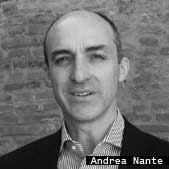 |
An art historian and director of the Museo Diocesano, Padua (since 2000), Andrea Nante worked for the cisaap from 1996 to 1999. He has taught several courses, such as History of Ancient and Mediaeval Art at the Faculty of Architecture, University of Ferrara (2011-2013), and Museum Studies at the Giustiniani-Marcianum Institute of Religious Studies, Venice (2008 -2014). Since 2013 he has taught The Bible and Art at the Institute of Religious Studies, Padua. He also collaborates with the National Office of the Ecclesiastical Cultural Heritage of the Italian Episcopal Conference. |
Mario Piana, Università IUAV di Venezia |
|
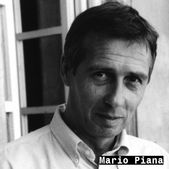 |
An architect and professor of restoration at the Venice University Institute of Architecture (iuav), Mario Piana is also a iuav doctorate supervisor. From 1979 to 1998 he worked as an architect at the Venice Superintendency of the Environmental and Architectural Heritage, where he inspected work carried out on the art-historical heritage of Venice and its lagoon as well as designing and directing the works for the restoration of many Venetian landmarks. He has published essays on architectural restoration and the history of construction techniques. He is member of the cisaap Scientific Committee. |
Damiana Paternò, Università IUAV di Venezia |
|
 |
After graduating from Venice University Institute of Architecture (iuav, 2008), she obtained a PhD in the Conservation of the Architectural Heritage from the Politecnico di Milano with a thesis on restorations of Palladian buildings in the 19th and 20th centuries (2013). Since 2008 she has been a teaching assistant at the iuav. As a research fellow at the same institute (2014), she conducted studies on Palladio’s construction techniques and drafted a project for a catalogue of them in cooperation with the Ministry of the Cultural Heritage and the cisaap, with which she has collaborated since 2010. She has taken part in Italian and international conferences and has written essays and articles on the state of conservation of Palladian works and their restorations; she drafted the first complete register of all Palladian restoration works carried out since 1945, published as Palladio, materiali, tecniche, restauri (2011). |
Fernando Rigon Forte |
|
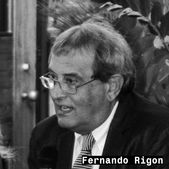 |
After graduating in the history of art from the University of Padua (1968), Fernando Rigon furthered his studies at the same university (1977) under S. Bettini, R. Pallucchini and L. Puppi. From 1976 to 1983 he was director of the Museo Biblioteca Archivio, Bassano. With Massimiliano Pavan, he launched the work of the National Committee for the Edition of the Writings and Correspondence of Canova in the Ministry of Culture (1981). From 1983 to 1991 he was director of the Museums and Conservator of the Civic Monuments of Vicenza. From 1989 to 2001 he was secretary of the Restituzioni programme, promoted annually by Banca Intesa. Since 1978 he has been a member of the Accademia Olimpica and since 1983 of the cisaap Scientific Committee. From 1978 to 1991 he was a member of the Regional Museums Committee and from 1988 to 1990 of the Civic Commission of the City of Padua for a New Museum System. Since 2001 he has been a consultant on cultural affairs for the Banca Popolare di Vicenza. Since 2000 he has been a member of the commission for the exhibition layout of the new Museo Diocesano, Vicenza, and in 2001-02 he supervised the new exhibition design of the Museo Civico, Asolo. In 2004 he was appointed a consultant to the 6th Commission of the Veneto Regional Council for the drafting a new law on cultural goods and activities (forthcoming). He is the author of around 200 publications in specialised reviews and in catalogues for exhibitions, museums and collections. |
Luca Trevisan, University of Verona |
|
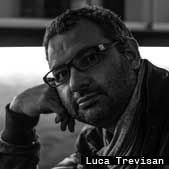 |
A member of the Accademia Olimpica, Luca Trevisan is a post-doctorate researcher in the history of modern art in the Department of Cultures and Civilisations, University of Verona, where he has carried out research since 2005. A temporary lecturer in the history of contemporary architecture at Ca’ Foscari University, Venice, in 2013-14, he has been awarded several bursaries and research grants. He currently teaches art history and architectural history at the Centro per il restauro “A. Mantegna”, Piazzola sul Brenta (Padua). Since 2008 he has been the commissioner of the Office for the Ecclesiastical Cultural Heritage in the Diocese of Vicenza. In 2010 he became a board member of the Diocesan Museum and in 2011 of the Friends of the Monuments and Museums of Vicenza. A speaker at many conferences, seminars and lectures, he has been curator or member of the academic research team for several major exhibitions. In his publications (monographs, essays, conference papers, exhibition catalogues, etc.), he has mainly used archive investigations to deal with themes concerning Veneto art from the fifteenth to the twentieth centuries, with a special focus on the architecture of Vicenza. |
Giulio Zavatta, Università Ca’ Foscari di Venezia |
|
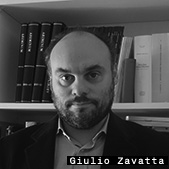 |
Having graduated from the arts faculty of Bologna University in 2001, Giulo Zavatta went on to obtain a master’s degree in the history of art with a dissertation on the drawings of Antonio da Sangallo the Younger preserved in the Uffizi Drawings and Prints Cabinet (2006). After a period of collaboration with the Superintendency of Modena and Reggio Emilia, he completed a PhD in cultural heritage studies at the University of Verona with a thesis on Palladio’s work in Verona and environs (2013). At present he holds a research grant at Ca’ Foscari University, Venice. He has taken part in Italian and international conferences and has written monographs and articles on Antonio da Sangallo the Younger and Palladio with a special focus on their Veronese works and relationships with craftsmen and patrons. |